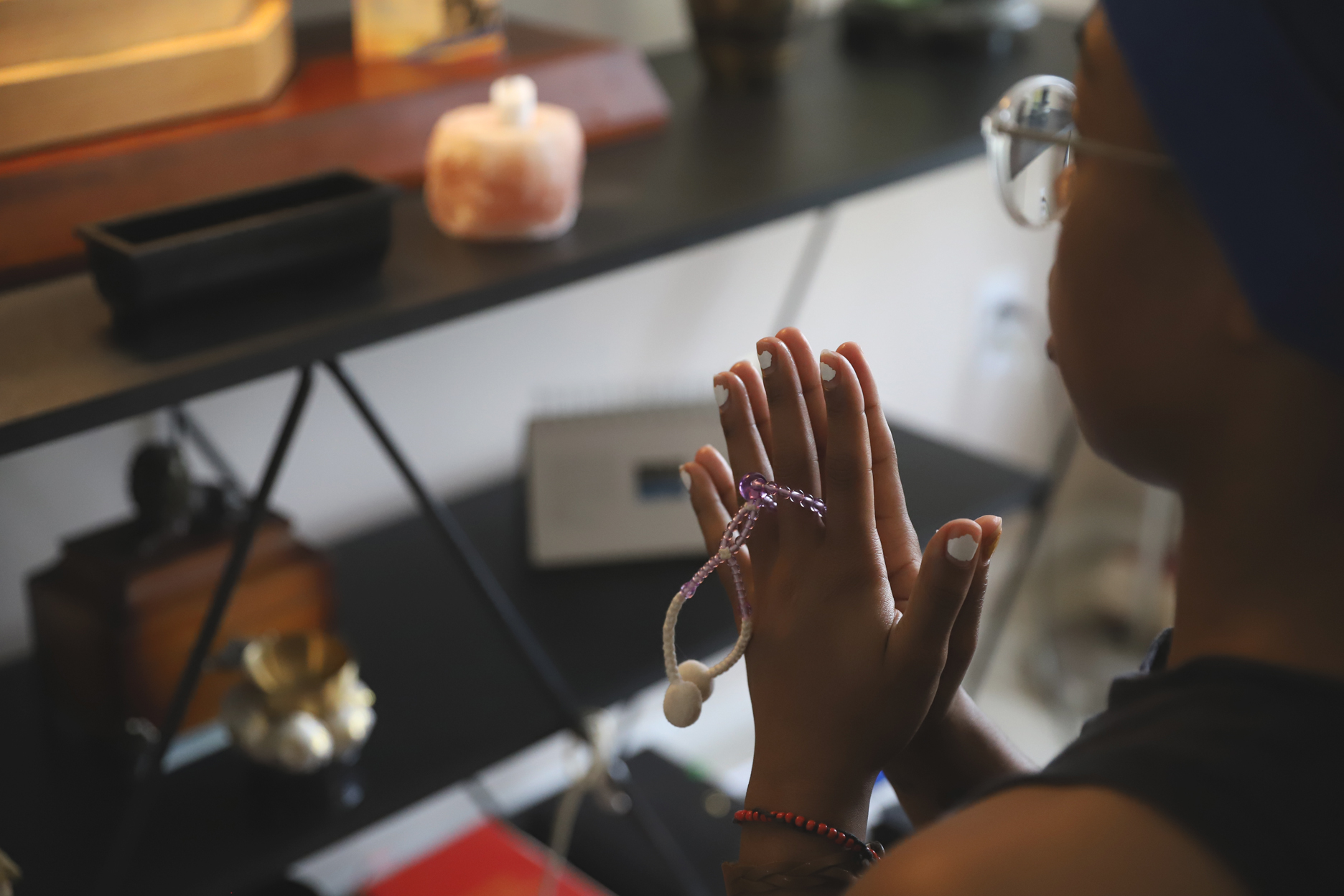A: Many dictionaries define prayer as a request or petition to a higher power. Based on this common understanding, prayer can seem passive.
Nichiren Daishonin redefined prayer as a rigorous effort to reveal our innate enlightement— and to help others do the same.
For instance, he states that his “determination has perhaps acted as a prayer, for I have been able to come safely through any number of trials” (“Consecrating an Image of Shakyamuni Buddha,” The Writings of Nichiren Daishonin, vol. 1, p. 686).
He also states, “If you think the Law is outside yourself, you are embracing not the Mystic Law but an inferior teaching” (“On Attaining Buddhahood in This Lifetime,” WND-1, 3).
He equates prayer with a determination, or vow, grounded in the conviction that the ultimate power rests within each of us.
Ikeda Sensei writes: “Prayer in Nichiren Buddhism was a revolutionary departure from the kind of dependent faith in which people simply wished for a godsend from on high or passively entrusted their prayers to priests.
“A vow is something we ourselves make; it is active and autonomous. Our prayer, infused with our vow, resonating powerfully from the innermost depths of our lives, is the sound that vanquishes fundamental ignorance and reveals our originally inherent enlightened nature” (October 2, 2020, World Tribune, p. 2).
When we chant Nam-myoho-renge-kyo, our “body and mind at a single moment pervade the entire realm of phenomena” (“The Doctrines of Three Thousand Realms,” WND-2, 82). Especially when infused with our vow for kosen-rufu—the spread of the Mystic Law to create a peaceful world—our prayer can pervade the entire universe. Such prayer helps us bring forth limitless wisdom, courage and compassion to continue taking the most effective action.
In contrast to the idea of prayer being passive, prayer in Nichiren Buddhism must be accompanied with making all-out efforts. We pray and work hard for victory in our own lives, for the happiness of others and for kosen-rufu.
Speaking to a member struggling to buy a house, Sensei offers practical guidance on how to pray:“Daimoku (chanting Nam-myoho-renge-kyo) based on a vow and wish to achieve kosen-rufu by showing people the way to attain absolute happiness is the same type of daimoku shared by all of the Buddhas and Bodhisattvas of the Earth.[1] When you pray like this, the Buddha nature within your own life will open up and raise your life condition to such a degree that you can even move the universe. When that happens, you will be able to realize your wish … without fail. …
“For us, the foundation of prayer is always kosen-rufu. And daimoku that originates in the determination to contribute to kosen-rufu produces immeasurable and unlimited benefits” (The New Human Revolution, vol. 21, pp. 250–51).
—Prepared by the SGI-USA Study Department
References
- Bodhisattvas of the Earth: An innumerable host of bodhisattvas who emerge from beneath the earth and to whom Shakyamuni Buddha entrusts the propagation of the Mystic Law, or the essence of the Lotus Sutra, in the Latter Day of the Law. They are described in “Emerging from the Earth,” the 15th chapter of the Lotus Sutra. ↩︎
You are reading {{ meterCount }} of {{ meterMax }} free premium articles

